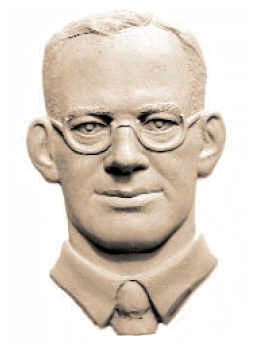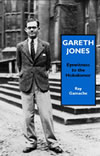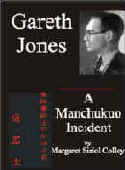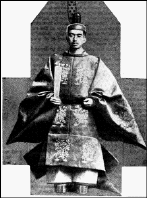Gareth Jones
[bas relief by Oleh Lesiuk]
HOME |
Stop Press |
Complete Soviet Articles & Background Information |
Précis of Gareth's
|
All Published Articles |
BOOKS
|
|
|
|
More Than Grain of Truth(2005) |
|
|
TOPICAL
'Are you Listening NYT?' U.N. Speech - Nov 2009 |
Gareth Recognised at Cambridge - Nov 2009 |
Reporter and the Genocide - Rome, March 2009 |
Order of Freedom Award -Nov 2008 |
Premiere of 'The Living' Documentary Kyiv - Nov 2008 |
Gareth Jones 'Famine' Diaries - Chicago 2008 |
Aberystwyth Memorial Plaque 2006 |
GENERAL
Scholarship Fund |
Site Map |
Links |
Legal Notices |
Sponsored Links |
Contact |
|
It was this unity of the Chinese nation that the Japanese feared and following another fabricated incident, the ‘China Incident’, the Chinese and Japanese armies clashed near the Marco Polo Bridge outside Peking. On July 29th 1937 the Japanese took Peking and China was at war. On the 10th of December the city of Nanking was entered by the Japanese and there followed for the next three months atrocities of such an inconceivable nature. This reign of terror by the Japanese Army became known as the ‘Rape of Nanking’. In September Prince Teh Wang joined the Japanese in the war against China and occupied the province of Suiyan. He was designated a traitor of the National Government. The history
of China at this time was so closely intertwined with Japan that one must now
turn ones attention back to that nation. During the thirties Japan suffered a period of unchecked aggression
abroad and murderous conspiracy at home. Following the death of Chang Tso-lin the Japanese Government resigned
and Hamaguchi Yuko became Prime Minister. In 1930 he was shot and wounded by a right-wing ‘patriot’ at a Tokyo
station and later died of his wounds. For a short time Shidehara Kijuro, the Foreign Minister became Acting
Prime Minister after the attempted assassination of the Prime Minister though
at the time of the ‘Mukden Incident’ he had resumed the office of Foreign
Minister. In 1931 the ‘Young Officers’ plotted a ‘coup d’état’ to
assassinate the entire Cabinet and recommended that Araki Sadao be made Prime
Minister. He urged the high command
[following the murder of Chang Tso-lin] to send an army to overrun
Manchuria. He headed the 40,000 strong Kodokai: an organisation based on the philosophy of Koda ‘the Imperial Way’,
which recommended reform at home and expansion abroad. “There is a shining sun ahead for Japan in
this age of Showa”, prophesied Araki. Showa or ‘Enlightened Peace’ was the title given to the period of
Hirohito’s reign. The coup was
suppressed and Araki was appointed Minister of War in December 1931 with the
Seiyukai party. [Seiyukai means
Association of Political Friends.] This
party favoured economic, rather than military, expansion. He also favoured the Strike-North rather
than Strike-South movement, which was the vehement intention of Hirohito and
with whom he eventually fell out of favour. The Strike-North faction favoured
expansion into Communist Russia rather than southwards into China and other
Asiatic countries where there were raw materials in which Japan was
lacking. |
Hirohito in Imperial Robes. |
|
|
|




